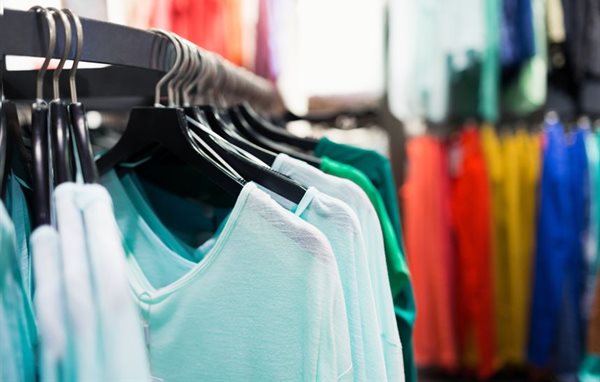
RLC members include the major clothing and homeware retailers in South Africa such as Woolworths, Truworths, TFG, Pepkor and Mr Price, as well as international retailers H&M and Cotton On and online retailers Takealot and Superbalist. In total, 16 retail groups participate, spanning 69 retail brands across South Africa and sub-Saharan Africa.
The industry report tracks several categories within clothing, footwear, accessories and homeware.
Trends that emerge from the RLC report are:
• Measured retail market sales are down 21% y-o-y for the period March to September, as retailers and consumers were impacted by lockdown restrictions and a contracting economy.
• With consumers spending more time at home, they are devoting a larger share of their wallet to home-related purchases, particularly appliances, furniture, accessories and décor. Homeware sales grew between 11% and 25% year-on-year from June.
• Customers are spending less on formalwear, with a clear shift towards casualwear and essential wear.
• Since June 2020 when stores re-opened fully, the market contracted by 9%, every month, compared to the same period last year.
• The Kids & Baby category sold the most in rands and achieved the highest growth of 48% in May 2020, which speaks to the pent up demand post-lockdown Level 5.
With over 50 sub-categories tracked, the RLC report is the only report of its kind in South Africa that provides market data down to a lower category level, for example, ladies dresses and skirts.
Chairman of the RLC, Shane Butlion, says trading has been subdued since the lockdown in March and although there are some early signs of recovery in certain categories, the market has not yet returned to pre-lockdown turnover levels.
“Sales of clothing and homeware declined substantially in March 2020 as purchase shifted towards food items just before the lockdown. Retail sales in our measured market fell 96% year-on-year in April, with very limited sales in a few categories deemed essential by the lockdown regulations.
"With the easing of retail operating restrictions in May, the market saw a recovery with year-on-year growth of 14%, primarily driven by Kids and Baby (up 48%), Women’s Intimate Wear (up 29%) and Menswear (up 14%). Every other category traded down on the prior year, with Women’s Accessories being the hardest hit growth-wise (down 54%) and Women’s Outerwear by far the largest impacted in rand terms.”
“An interesting trend to note was that with consumers spending more time at home, they devoted a larger share of their wallet from May 2020 onwards to home-related purchases, in particular home appliances, furniture, accessories and décor. One can also see a clear shift away from formalwear spend in favour of casualwear and essential wear.
"Within the context of a contracting economy, and a further 2.2 million South Africans jobless by the second quarter of the year, it is not surprising to note that from June onwards the market contracted by 9%, every month, compared to the same period last year. Homeware is the only category that has experienced positive growth since June, with every other category trading down on last year.”
Dr Christie Viljoen, economist at PwC's Strategy& says for a country in recession and with rising unemployment numbers it is expected that household budgets were reprioritised towards food and medicine at the cost of more durable items such as apparel. Total retail sales were down 4.2% compared to the same period last year.
“The South African economy contracted by 17.1% y-o-y during the second quarter of the year. This included a 15.7% y-o-y decline in real household expenditure. A combination of employment losses, salary reductions, and heightened uncertainty about the outlook for household finances, forced consumers to tighten their belts," says Viljoen.
He added that Google data shows that, in the last week of October, South Africans were still spending 24% less time in shopping centres compared to a baseline period of January 3 to February 6.
PWC expects the South African economy to shrink by 9.4% during 2020 and that only 800,000 of the 2.2 million jobs lost in the second quarter will be recovered by year-end. As such, household spending and retail sales will remain under significant pressure towards the end of 2020.
“PwC’s baseline scenario indicates that it will take three years for South Africa’s gross domestic product (GDP) to return to 2019 levels. Under a downside scenario, this recovery could take up to six years. A similar timeframe is expected for a recovery in jobs.”
Commenting on the latest report, Viljoen welcomed the return of the RLC, saying, “The RLC data is sourced directly from the retailers, provides more granular category data to assist with decision making, and is available prior to Statistics SA’s report.”
We are actively growing retail membership and providing access to non-retailers to the aggregated data at a very reasonable fee. Enquiries can be made through our website – www.retailers.org.za."
Butlion added that the RLC is planning to add new categories to cover the beauty segment and called on retailers in this sector to join the RLC so as to ensure a definitive state of the market report going forward.
“With Black Friday and Christmas in the last quarter of 2020, the report is a valuable tool to track growth of a category, region and even a specific week in the retail cycle. Our members find the monthly reports give them solid insight into their performance relative to the market. It provides senior decision-makers with highly valuable information to assist with strategic decisions and marketing/promotional plans.”
Butlion concluded that data is available as far back as January 2017, allowing the retail industry insight into how customers responded over time to strategic and operational decisions versus that of other players in the industry.
The monthly RLC reports are made available 30 days after month-end.